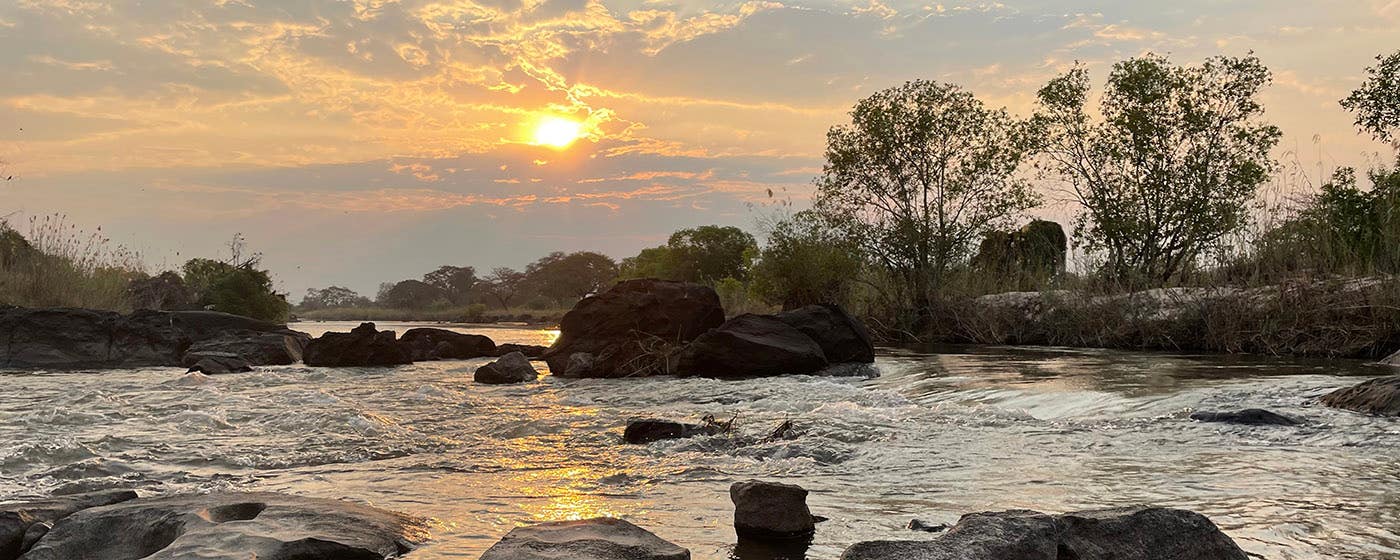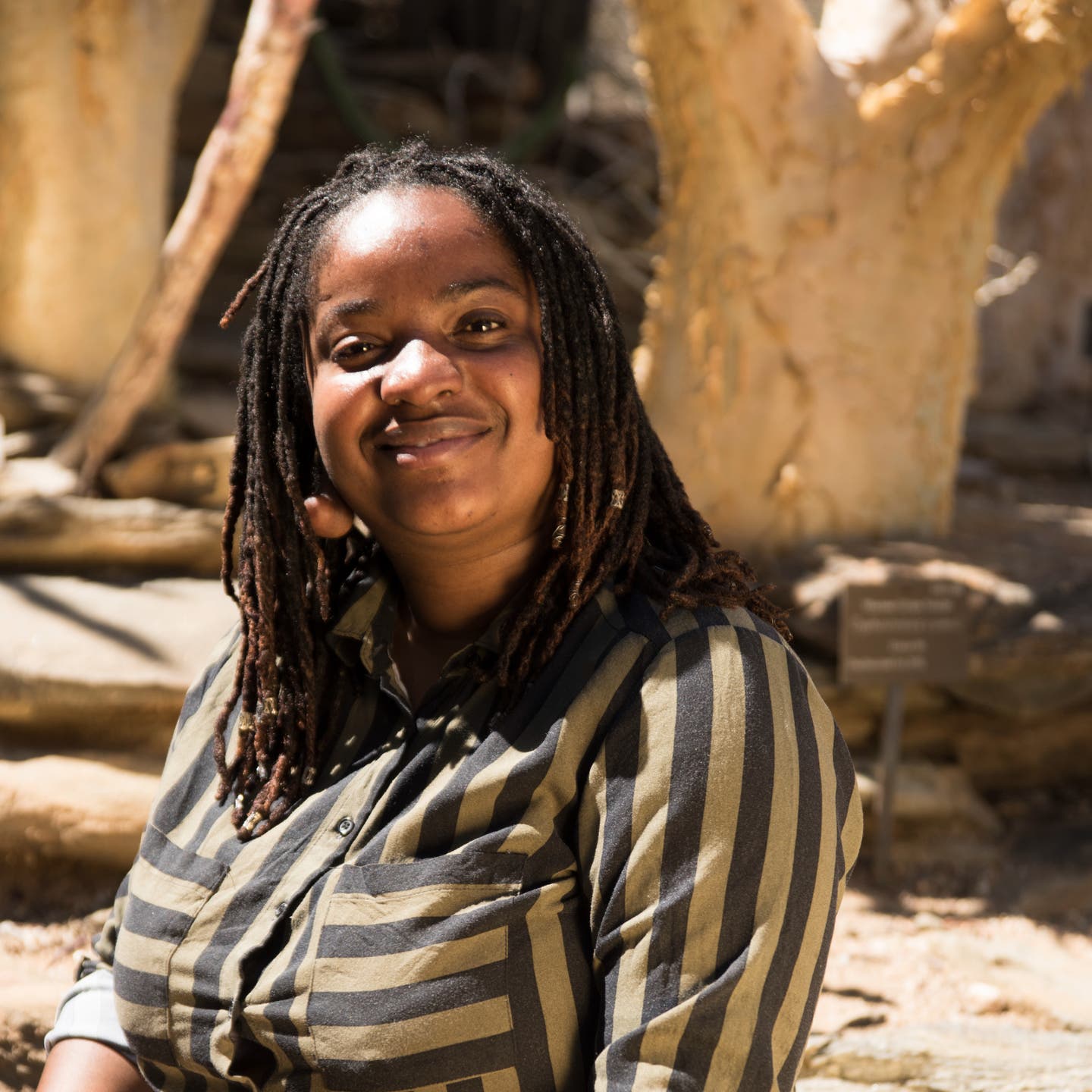Nadia April advocates for the rights of marginalized and Indigenous communities in Namibia through activism and art. Her passion for human rights work began when she was a student at the University of Namibia. After being invited to a program focused on rights for LGBTQI women, Nadia was inspired to create a feminist forum especially for LGBTQI students to organize and engage in human rights work.
In 2019, Nadia was hired as the Women’s Leadership Center’s (WLC) San Indigenous Woman program officer. Issues that affect San women and girls are an issue close to Nadia’s heart. She was raised by her great grandmother, a San woman, until she was a teenager when she moved to Windhoek.
Her work with WLC’s Indigenous Woman Program is often focused on the intersection of women’s rights, Indigenous rights, human rights and more recently climate justice.
San communities, who live in parts of Southern Africa, are the oldest Indigenous groups in the world. In Namibia, San communities are the most marginalized groups in the country and many live in poverty. San peoples traditionally were hunter-gatherers, using their ancestral knowledge of plants, fungi and animals, cultivated over thousands of years, to survive. Over the past several centuries, San communities have been restricted to smaller areas and conservancies as much of their ancestral homes have been converted into farmland or designated as parks, destroying their traditional livelihoods and cultures.
“The earth is where everybody lives, and whatever you do unto the earth, whatever you do unto the land, it’s what you do unto the body,” explains Nadia. “Especially in the San communities, the culture is directly linked to the land they live in, the trees, the animals, the water, the sounds. It’s connected to the culture. It’s connected to the songs. It’s connected to the dances. It’s connected to how you narrate the world around you.”
The latest threat to that connection with nature and to San communities has come from a Canadian oil company called ReconAfrica. When news first broke in late 2020 that the Namibian government had granted licenses for ReconAfrica to explore for oil in Kavango East and West, two areas where many San communities live, Nadia thought perhaps there might be an economic opportunity. However, as she began reading more news coverage about the plans and learning about the Niger Delta’s experience with oil and gas, she realized that the voices of San communities were missing from the conversation and coverage.
“This is San ancestral land and a heritage site, so we felt it’s very important that San people, they have their voices, they have an opinion, and they give consent to what’s happening to the land,” says Nadia. “The fear is that there is not enough land left for them, so the least they can have is an opinion on the land they have right now.”
WLC convened San community leaders from Namibia and the Okavango Region in neighboring Botswana as part of the Voices of San Women Speaking for Ourselves program to better understand what they knew about the plans to explore for oil. Very few communities were aware of the licenses that had been granted for oil exploration, and those that were aware of it had meetings with representatives from ReconAfrica and the Namibian government’s Division of Marginalized Communities that focused on economic opportunities and did not explain the environmental risks.
WLC and the Namibian San Council have met with community leaders regionally and created a petition for San community members in opposition to oil exploration and fracking. As WLC connected with more civil society groups and organizations in Namibia, the support to protect the Kavango and Okavango River Basin grew.
The groups that had come together to oppose and expose oil exploration and fracking staged a protest, and were invited to meet with Namibia’s parliamentary committee on natural resources The groups have also held media briefings and webinars to help all Namibians understand what is at risk if the Kavango region and Okavango Delta, a UNESCO World Heritage Site, are polluted. The WLC also created a petition against oil and gas exploration in Namibia.
“Our aim is to get one million signatures; for every Namibian to sign on the petition until ReconAfrica leaves,” says Nadia of the growing movement.
Nadia ultimately envisions a Namibia that is more fair and equitable, with thriving wildlife.
“The Okavango is a very sensitive area and it’s beautiful,” she says. “It’s one of the few wet green spaces that we have in Namibia.”
She has had the chance to travel to the area and is awed by its beauty. She says it’s like stepping into a nature documentary, filled with crocodiles, and hippos.
“It’s so breathtaking,” says Nadia as she smiles thinking about it. “I Don’t know how to explain it. I feel like everybody should have the chance to experience that. It calms you. Just being in that whole silence, you just want to connect with yourself.”
As Nadia helps organize a movement fighting to keep the Kavango region and Okavango Delta pristine for future generations, she hopes that as Namibia confronts the climate, extinction and global health crises in the coming decades that they will honor the international agreements they have signed to protect the wild. And she hopes that in the future Namibia and the international community will treat San communities equitably.
“That’s my dream, for San people to be respected and be included and not be treated like some exhibition,” she says.

